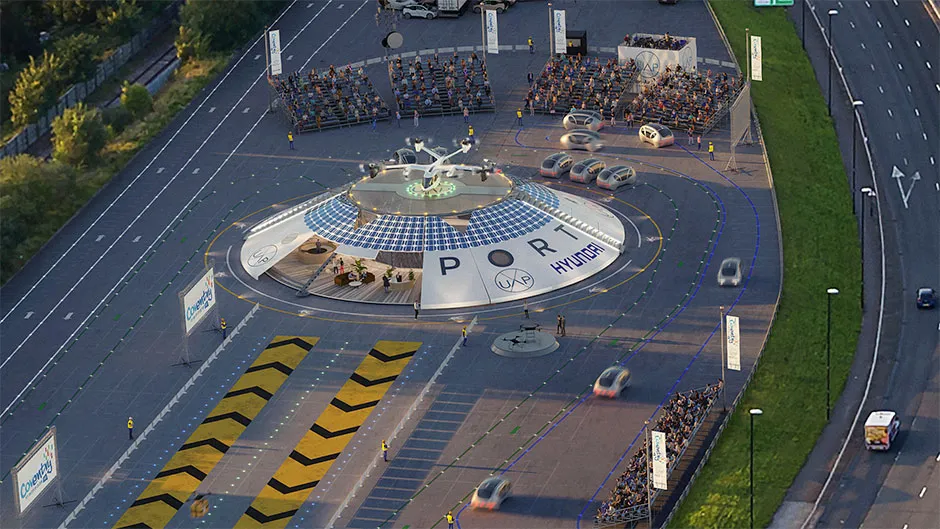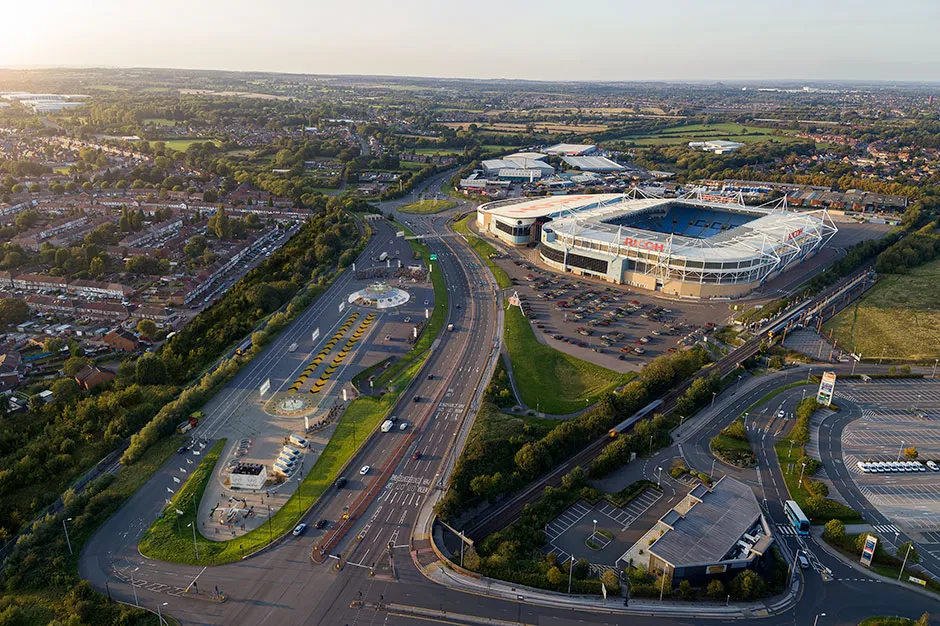Plans to build the world’s first off-grid transport hub for drones and air-taxis have just received government funding. The company Urban Air Port, which is building the hub in Coventry, will provide flying electric vehicles, carrying cargo and eventually people, with a place to charge and load up.
The project aims to lay the groundwork for a web of transport hubs that could provide a green, clean remedy to our cities' groaning infrastructure.
We talk to Ricky Sandhu, the Founder & CEO of Urban Air Port, to find out if the idea could take off.
Why do we need small Urban Air Ports?
When I first started working on this, my commute was just six miles across London, but it was polluted, congested and took over an hour. So I was just driven by passion and a sense of responsibility that we ought to be developing smarter, cleaner and greener ways to move around our cities.
The urban air mobility piece came about when Airbus started their air mobility programme around three years ago. They came to us and said that they knew how to build aircraft, but they didn’t understand cities. They were building a new type of aircraft that would be small, electric and used for short trips – and they wanted to understand what infrastructure could support something like this.
From there, I built a thesis for what this infrastructure could be, and how it would support the different spaces we live in from super urban cores like Canary Wharf to our countryside. This work lead me to realise that this kind of infrastructure will be massive – and hasn’t been talked about or invested in enough. And that lead to the creating of Urban Air Port LTD.
Read more about drones:
- Drones to carry COVID-19 samples between UK hospitals
- NASA to send a drone to explore Saturn's biggest moon
Why air-taxi or air-delivery instead of land?
Well, our land mobility systems definitely need to evolve as well. Our cities are becoming more and more congested and we’re seeing the degradation of our air quality.
There’s a mass migration happening towards cities and we’re all switching to shopping via e-commerce. There’s now delivery vans on the kerb of every street, clogging up our roads. This ultimately exacerbates the problems cities already have.
So if we can organise another system whereby there’s coordinated locations – like the Amazon Lockers – that an Urban Air Port will help service with a network of drones, it might go some way to remedying influx of lorries and vans coming into our cities.
I think this idea for flying cargo could eventually be completely transferrable to flying humans. If we can get from A to B quicker, and on zero emissions, then surely that’s advantageous.
So, will it be a totally green enterprise?
The first installation in Coventry will be 100 per cent off-grid. That’s going to be powered by a hydrogen generator, which is totally clean. There are no emissions. Of course, there’s some carbon intensity involved depending on the type of hydrogen used and how it’s produced. But our aspiration is to eventually get hydrogen from zero emission sources.
There’ll be solar panels too. Though this isn’t just about being clean, it’s important too that we try and protect our national grid. The adoption of electric cars is going to be an onslaught. So we don’t want to add to that.
But also, simply, in this location there’s no access to power. And in future as we grow, there’ll be lots of locations around cities that might be suitable for Urban Air Ports where there might not be enough supply of energy.

Why Coventry? And why the UK for the pilot scheme?
From a logistics point of view they’re in the centre of England. They’re four hours away from all major cities. That’s why Amazon has one of its largest fulfilment centres there.
There’s great proximity to Birmingham and its airport, and indeed the rest of the Midlands. There’s also a decent opportunity there. It’s a car-centric city, there’s no metro, and most people living there are dependent on a car. So hopefully we can help transition towards a cleaner future.
We’re also a British company, I’m from Birmingham and I studied in Nottingham. A lot of my friends went to work in the automotive sectors in Coventry. And that sector is obviously being hit quite hard right now. So there’s something quite motivating in the fact that we might be able to create jobs in that area with some very talented people.
Who’s going to buy these Urban Air Ports in the future?
We have a growing pipeline of orders. We’re already in receipt of commercial orders from overseas. We’ve had interest from different city authorities (some in California) and airports. You can see how this kind of thing can work to ease transit between the city centre and an airport that’s 30 to 40 minutes away.
We’re also speaking to private developers, real estate owners and operators in Europe. Our partners Hyundai have been able to open doors for us and of course, they can provide examples of the kinds of vehicles that would use the Urban Airport.
We’re also starting conversations with hospitals and we’ve had interest from the military in the event of emergency and disaster scenarios. In places where there isn’t infrastructure or it’s been lost, something like the Urban Air Port could immediately be deployed to provide instant connectivity.
How many regulations, in terms of flying drones near people and cities, are you going to have to work around?
You know, in Ireland and Scotland there are already drones delivering stems of broccoli to people. And there are deliveries already happening by drone across the world. In Canberra there’s even dedicated airspace now for cargo drones.
In terms of certification we’re working with partners who are building unmanned traffic (UTM) corridors, highways in the sky. One is currently being designed from Coventry to Kenilworth, a 15km journey.
Those are already being drawn up with involvement from the Civil Aviation Authority who are looking to do more trials to understand where these corridors should be and what kind of vehicle should be permitted to travel on them.
And of course there’s a huge number of take off and landing areas dotted around the UK already. It’s not a big stretch to try and join those up in areas where they might be needed. But ultimately before we see more air taxis or drones take over we’re going to need the infrastructure. You can’t have trains or aeroplanes without train stations and airports.

How will you mitigate for noise?
In regards to noise, we’re very different to traditional flight. Of course there’s no traditional jet engines here or anything like that. But the types of craft that are being built are competing with one another to be the quietest so it’s sort of built into the thinking there.
That said, a lot of the vehicles using the port will work like helicopters, so there won’t be zero noise. The important thing is to put that in context, the noise of city. We’ve done studies with our engineering partners and with NASA to show that when you have an elevated position for take-off and landing – two storeys or around six metres above street level – you can barely hear it take off because of the noise created by the urban fabric that we’re used to.
What’s next?
If you look at The Jetsons cartoons you’ll see there’s always infrastructure. There were always these towers where the vehicles and the Jetson family go between. The idea has always been there. And that’s what we want to do with this campaign and project: we want to demonstrate that the conversation around mobility has to be around infrastructure.
We can’t all have electric cars, for example, if we can’t charge them. So let’s be ahead of the curve for the next wave of electric mobility and get the infrastructure in place now.
Read more about the future of travel:
